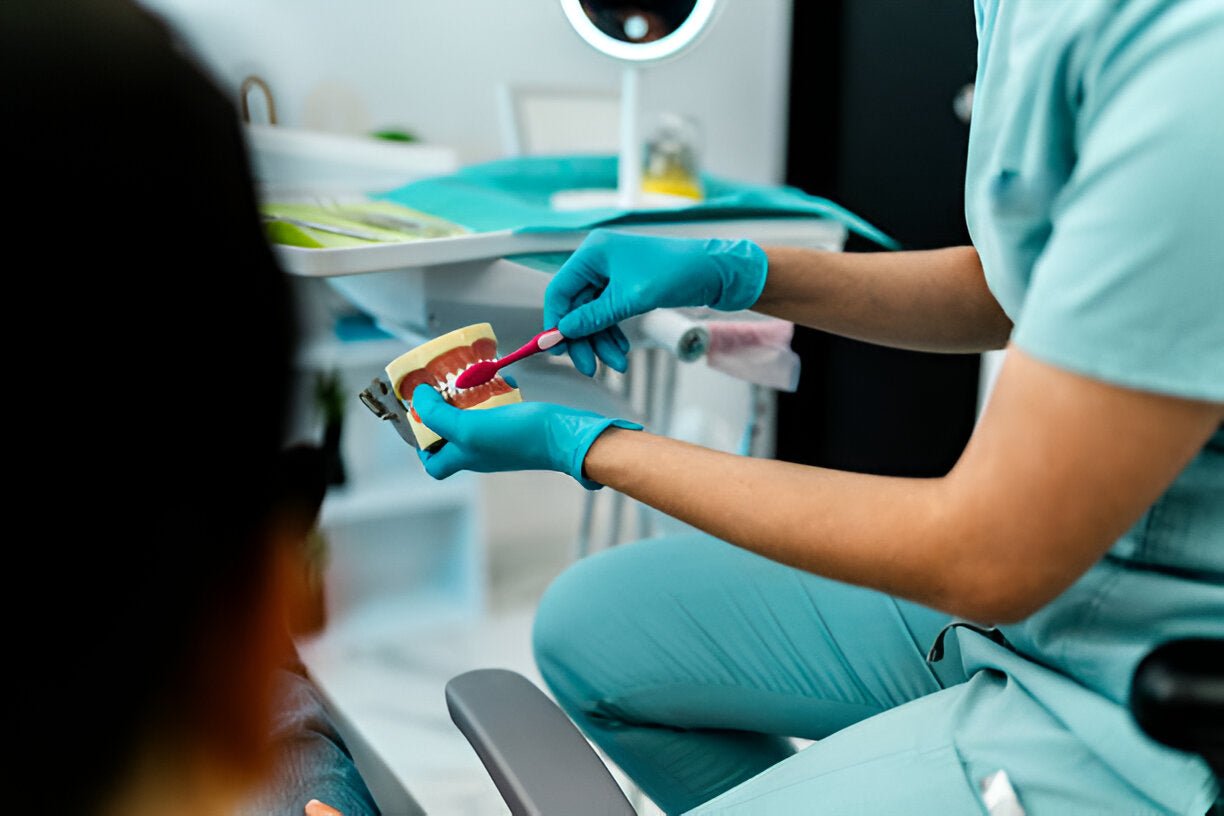Tooth Extraction Recovery: Essential Facts and Pain Management Tips
The first 48 hours after your tooth extraction is the most crucial stage of your recovery process. For some, coping with lifestyle adjustments can cause anxiety and uncertainty.
Post-extraction challenges like pain, swelling, and difficulty with daily activities can make healing an uphill climb.
But don’t worry. This article provides essential information and practical tips to navigate the recovery process smoothly. From managing pain to returning to daily activities, we'll guide you through each step of your journey.

The Physiological Aspects of Tooth Extraction Recovery
The extraction site typically heals within 7 to 10 days, but it may vary from one patient to another. So, it’s important to know how your body works to better understand your tooth extraction recovery timeline. It means learning more about the physiological aspects of your healing process.
You might see a fragile white material around the extraction site. Most people think it's an infection, but if there's no severe pain, it's usually granulation tissue, a normal part of healing.
Granulation tissue is an essential component in our body’s natural healing process and plays an important role in post-dental surgical procedures. A blood clot will form in your socket within 24 hours of your tooth extraction to stop the bleeding. Once the clot is in place, your body will start creating granulation tissue to cover the wound. The tissue that appears creamy white is composed of collagen, white blood cells, and blood vessels.
This tissue is also considered a new connective tissue that has three major functions.
- Immune: Protects the wound surface from harmful microbes and further injury.
- Proliferative: Grows new tissue and blood vessels to fill the wound.
- Temporary Plug: Covers the wound until scar tissue forms.
Granulation tissue might linger due to underlying health issues or problems during the healing process. Possible causes of prolonged wound healing may include:
- Diabetes
- Autoimmune diseases
- Reduced blood flow
- Zinc deficiency
- Obesity
- Older age
- Trauma
- Tobacco abuse and alcoholism
By being aware of these factors, you can take steps to address any issues and support a smoother post-extraction recovery process.
Signs of Proper Tooth Extraction Healing
The previous section has provided valuable insights into the physiological aspects of your tooth extraction recovery. Now, dive deeper into your healing process learning the normal signs of healing and being aware of potential complications.
Normal Healing Symptoms
- Slight Discomfort: Post-extraction common symptoms might include mild pain that is usually manageable with over-the-counter pain relievers and should gradually decrease over time. While some discomfort is normal, severe or worsening pain that doesn’t improve with pain medication may indicate an issue.
- Mild Swelling: A small amount of swelling around the extraction site is typical and usually peaks within 48 hours.
- Minor Bleeding: A bit of bleeding is expected right after the extraction, but it should taper off within a few hours. You might also notice some pinkish saliva for the first day or so. If bleeding continues heavily beyond the first few hours or seems uncontrollable, this could be a sign of a problem.
Symptoms such as increasing redness, pus, a foul odor, or fever could suggest an infection at the extraction site.
If you experience any of these concerning symptoms or have any doubts about your recovery, it’s important to contact your dentist promptly. Remember, monitoring your symptoms and staying in touch with your dentist in Culver City will help you manage your healing effectively and address any complications early on.
Do's and Don'ts After Tooth Extraction
While your body’s mechanisms allow your wound to heal naturally, it still requires careful attention to facilitate optimal recovery. There are post-extraction guidelines you can follow to minimize discomfort and complications, thus, promoting a swift return to normal activities. Here are some of the dos and don’ts after your tooth extraction procedure.
Do's
- Rest: Prioritize relaxation to aid your body's healing process.
- Gentle oral care: Maintain good oral hygiene without disturbing the extraction site.
- Cold compress: Reduce swelling and pain with ice packs.
- Soft diet: To protect the healing area, nourish your body with a soft diet such as smoothies, scrambled eggs, or lukewarm vegetable soup.
- Medication: Adhere to your dentist's prescribed pain relievers and antibiotics.
Don'ts
- Smoking: Avoid smoking to prevent infection and hinder healing.
- Straw use: Refrain from using straws to protect the blood clot.
- Vigorous rinsing: Gently rinse your mouth to preserve the blood clot.
- Hot liquids: Consume cool beverages to minimize discomfort and bleeding.
- Hard or spicy foods: Avoid irritating substances such as hard or spicy foods.
Remember, though, that individual cases may vary, so always consult your dentist for personalized advice.
Post-extraction Pain Management Tips
Post-extraction pain can vary from person to person with such discomfort subsiding within a few days. Pain may feel like a sore, throbbing toothache, but magnified a few notches. Imagine having a constant dull ache in the area, similar to a bruise but with a pulsing sensation.
Again, experiencing some discomfort following a tooth extraction is normal. With effective pain management, you’re on your way to a smooth and worry-free recovery. That said, here are some things you must remember:
Pain Medication
Over-the-counter pain relievers like ibuprofen or acetaminophen can help manage mild to moderate pain. Just follow the prescribed dosage and duration. Also, always check with your dentist before starting any new medication. On a side note, here are actionable tips to manage pain while you’re at home.
- Cold compress: Applying an ice pack wrapped in a cloth to your cheek can help reduce swelling and numb the area. Do this for 20 minutes at a time, several times a day.
- Elevation: Keep your head elevated when resting to minimize swelling.
- Rest: Allow your body ample time to heal by getting sufficient rest.
Returning to Normal Life After Tooth Extraction
Most people can return to work or school the day after the extraction. If your job involves heavy physical labor or if you experience significant discomfort, you might need to take a week off.
It’s important not to perform strenuous physical activity for at least 24 to 48 hours after the extraction. You can gradually increase your activity level once the initial healing period is over. Listening to your body and avoiding any activities are crucial at this point.
During this time, it's essential to maintain good oral hygiene and avoid putting excessive pressure on the extraction site. Most importantly, it's always best to follow your dentist's specific recommendations.
Should you have questions or issues with your extracted tooth, schedule an appointment with us at United Dental Care in Culver City.




 By:
By: 

